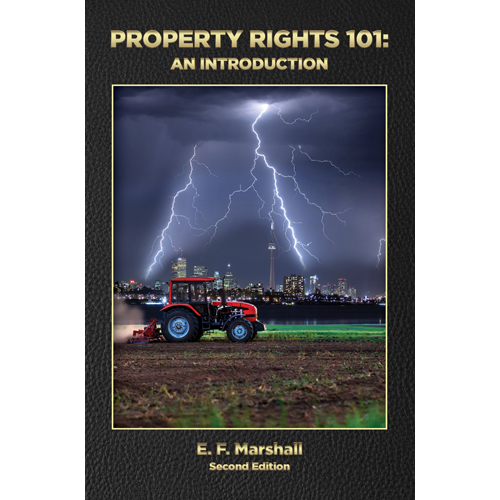The Docket – Information – Summons to Appear by Jeff D. Bogaerts, Paralegal
- 2017-12-01
- By admin
- Posted in Latest News
How does the legal system compel you to appear in court to answer to a charge brought against you?
This article will deal with the Charging Document, an Information, and the Summons to Appear.
I am sure we have all received either a parking ticket or summons for speeding or some other infraction under the Highway Traffic Act or some other Provincial Act such as Labour or Building Code.
An investigation is conducted, evidence is gathered, the evidence is matched against an appropriate charge, a Summons is written for you to appear in court on a certain date, time, and place.
As part of your Disclosure package you must ensure that you have copies of all these documents and that they are proper before the court, otherwise the charges can be brought into question and the possibility that the charges could be dismissed.
For this article, I will not deal with the Part I or Part II of the Provincial Offences Act. This article will deal with Part III offences. We will start with the following web site link, https://www.ontario.ca/laws/regulation/900200.
Courts of Justice Act
R.R.O. 1990, REGULATION 200
RULES OF THE ONTARIO COURT (PROVINCIAL DIVISION) IN PROVINCIAL OFFENCES PROCEEDINGS
Form 105 and 106 are the numbers we will deal with.
When you are charged by a By-law Enforcement Officer or a Provincial Offences Officer or some other government agent authorized to do so, these are the typical forms that you will receive or should receive in your disclosure package.
The first document is the Summons to Appear, Form 106. The STA will have the date time and place for the court to attend and what you have been charged with. The Charging document is called the Information, Form 105. This is the document that the government agent uses to obtain the Summons to Appear, Form 106. For details, refer to the Provincial Offences Act and start reading at Section 21. https://www.ontario.ca/laws/statute/90p33#BK35
Part III
Commencement of Proceeding by Information
21 (1) In addition to the procedure set out in Parts I and II for commencing a proceeding by the filing of a certificate, a proceeding in respect of an offence may be commenced by laying an information. R.S.O. 1990, c. P.33, s. 21 (1).
The agent must take the evidence that they have gathered in the investigation and stand before a Justice. The agent informs the Justice why they are there and what they want. The Justice will review the evidence, ask the agent questions and if the Justice is satisfied with the answers and the evidence presented, then the Justice will issue the Summons to Appear.
Standing before the Justice is called the Laying of an Information. That is, the agent lays before the Justice the evidence that would be sufficient to convince the Justice to bring the accused before the court. The entire evidence gathered in the investigation is not required to be shown to the Justice, only enough evidence to convince, on Reasonable and Probable Grounds, that the offence may have occurred, to bring you before the court.
It is important to ensure that the Information and Summons are sworn to, signed by the agent and Justice, that the dates coincide, that the documents have been served upon with proper service and so on. If any of the information is not correct, then there is a flaw in the Information. Depending on the severity of the Flaw, the Information could be Quashed, and the charges Dismissed.
If the Flaw can be corrected in court and the Justice agrees, then the amendment is made and the hearing proceeds. If your address was 151 Somewhere Street and on the Summons to Appear, which was served personally, had a wrong address of 115 Somewhere Street, would not be a Fatal Flaw, would be corrected in court and the hearing continue.
However, do not let any part of an error go unchallenged. For every error, raise the issue for correction. This undermines the validity and confidence of the agent and raises a reasonable doubt that may lead to a dismissal. This also brings into question the prosecution in checking for errors on the documents and the content of the Disclosure.
A Fatal Flaw would be the failure to sign the Information which was to be sworn to. Section 34 of the POA gives authority to the court to make amendments.
Motions that may be brought before the court. Motion to Quash, Adjourn, for Disclosure, Amend, for Particular, Non-Suit, to Amend or Divide a Count. There are also Motions under the Charter of Rights and Freedoms.
We are coming to the end of this series of articles in the preparation for your trial. Preparing for trial will be the next article. Once we have completed this, hopefully you will be highly confident to proceed or have retained a lawyer or paralegal to represent you.
Search:
Categories
Archives
- April 2024
- January 2024
- December 2023
- November 2023
- August 2023
- July 2023
- June 2023
- May 2023
- April 2023
- March 2023
- February 2023
- January 2023
- December 2022
- November 2022
- October 2022
- September 2022
- August 2022
- July 2022
- June 2022
- May 2022
- April 2022
- March 2022
- February 2022
- January 2022
- December 2021
- November 2021
- October 2021
- September 2021
- August 2021
- July 2021
- June 2021
- May 2021
- April 2021
- March 2021
- February 2021
- January 2021
- December 2020
- November 2020
- October 2020
- September 2020
- August 2020
- July 2020
- June 2020
- May 2020
- April 2020
- March 2020
- February 2020
- January 2020
- December 2019
- November 2019
- October 2019
- September 2019
- August 2019
- July 2019
- June 2019
- May 2019
- April 2019
- March 2019
- February 2019
- January 2019
- December 2018
- November 2018
- October 2018
- September 2018
- August 2018
- July 2018
- June 2018
- May 2018
- April 2018
- March 2018
- February 2018
- January 2018
- December 2017
- November 2017
- October 2017
- September 2017
- August 2017
- July 2017
- June 2017
- May 2017
- April 2017
- March 2017
- February 2017
- January 2017
- December 2016
- November 2016
- October 2016
- September 2016
- August 2016
- July 2016
- June 2016
- May 2016
- April 2016
- March 2016
- February 2016
- January 2016
- December 2015
- November 2015
- October 2015
- September 2015
- August 2015
- July 2015
- June 2015
- May 2015
- April 2015
- March 2015
- February 2015
- January 2015
- December 2014
- November 2014
- October 2014
- September 2014
- August 2014
- July 2014
- June 2014
- May 2014
- April 2014
- March 2014
- February 2014
- January 2014
- December 2013
- November 2013
- October 2013
- September 2013
- August 2013
- June 2013
- April 2013
- October 2012
- May 2012
- September 2011



